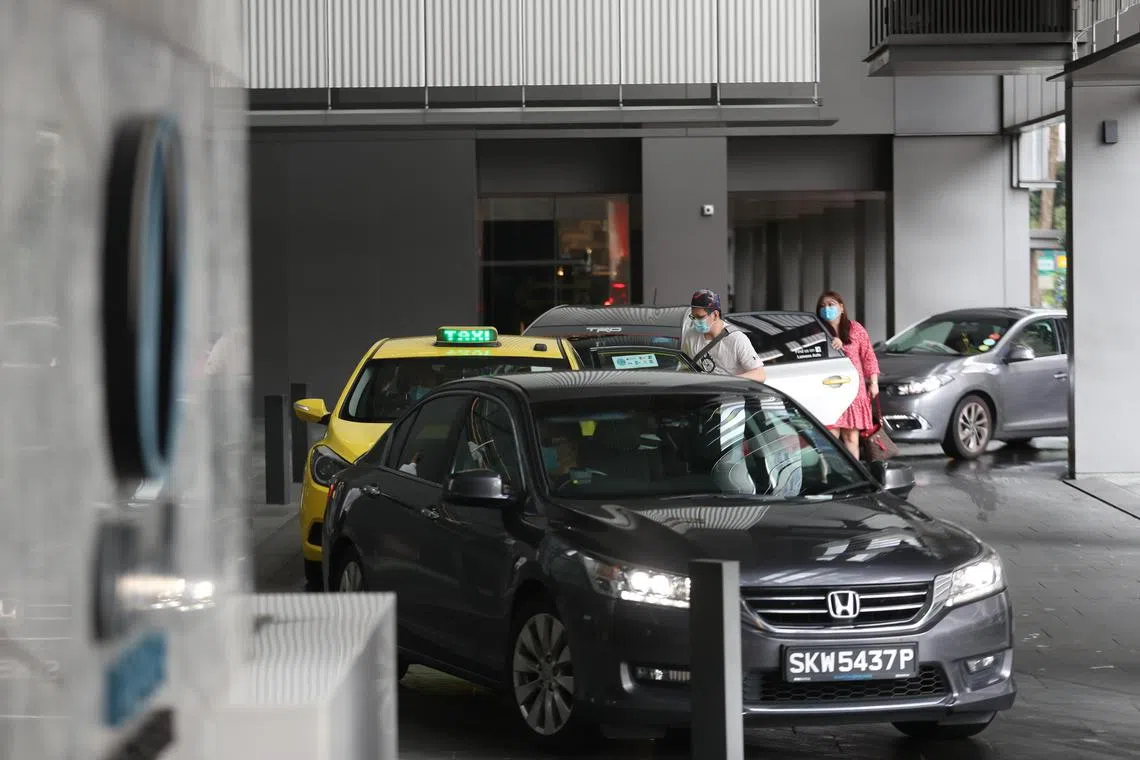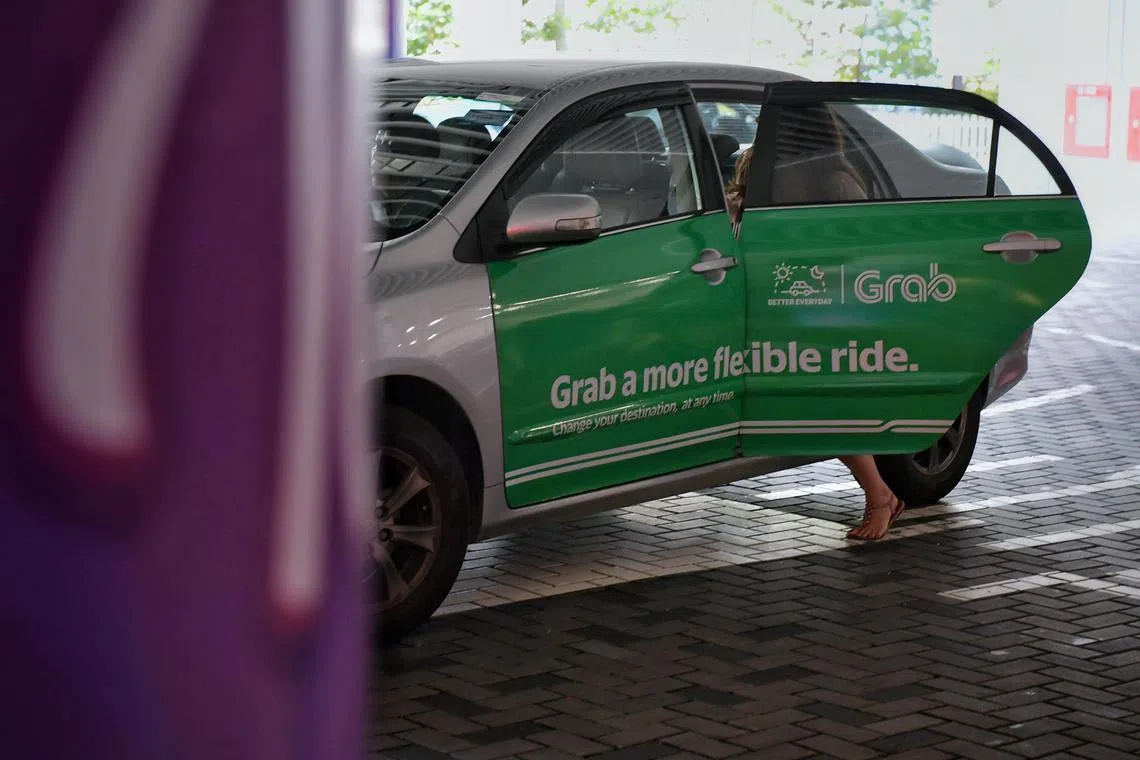Are some car buyers ‘masquerading’ as private-hire drivers to secure more financing?
Sign up now: Get ST's newsletters delivered to your inbox

Businesses and private-hire car drivers can borrow up to 90 per cent to 100 per cent of a vehicle’s cost.
ST PHOTO: TIMOTHY DAVID
Follow topic:
SINGAPORE - Seven or eight in 10 customers at Carro, a used-car marketplace, take out loans to finance their car purchases, and the majority of them register these cars as private-hire or corporate vehicles.
Mr Aaron Tan, co-founder and chief executive of Carro and Genie Financial Services, revealed these figures at a roundtable discussion organised by The Straits Times on the certificate of entitlement (COE) system
He said this is the case because buyers of privately owned cars can take loans of only up to 60 per cent to 70 per cent of the market value of a vehicle.
In comparison, businesses or private-hire car drivers can borrow up to 90 per cent to 100 per cent of the vehicle’s cost, he added.
As a result, Carro has been taking on financial risks to the tune of tens of millions of dollars each month.
Mr Tan said: “To be honest, we are not big fans of high COE prices... Because at the end of the day, the customer’s ability to pay back is the most important thing to my car-financing business.
“If push comes to shove, the private-hire vehicle driver can’t pay me because the instalments for the car are prohibitively high.”
Shedding more light on the trend, Mr Christopher Tan, a fellow roundtable panellist and senior transport correspondent at ST, noted that private-hire and company vehicles formed 37 per cent of car registrations from January to September.
He said that while the population of such cars has ballooned, the number of privately owned cars has shrunk.
According to Land Transport Authority figures, the number of chauffeured private-hire cars surged from 614 to 46,477 between 2013 and 2022, while the pool of privately owned cars fell from 582,296 to 542,145.
More buyers, ST’s Mr Tan said, are going down the private-hire vehicle or corporate routes to secure more financing so that they can afford a car.
Other panellists at the roundtable included automotive consultant and former motor trade veteran Say Kwee Neng, senior lecturer at the Singapore University of Social Sciences (SUSS) Victor Kwan, and economists Ivan Png and Walter Theseira. ST’s senior transport correspondent Lee Nian Tjoe moderated the session.
The surge in private-hire vehicles, said Mr Tan from Carro, has raised the question of whether some drivers are masquerading as private-hire car drivers.
He added that some of his firm’s customers work elsewhere, including in the civil service, and provide private-hire car services part-time.

Private-hire and company vehicles formed 37 per cent of car registrations from January to September 2023.
PHOTO: ST FILE
Mr Say said buying private-hire vehicles via easy financing has become a way for the industry to get around strict financing requirements.
He recounted the Government’s decision to increase deposit requirements for car purchases in early 2013
Noting the significantly higher interest rates incurred when repaying these private-hire vehicle loans, Mr Christopher Tan said more drivers would have to make many casual for-hire trips to make up for the higher instalment payments for their cars.
The “unhindered expansion of this new breed of cars” will lead to increased road use, congestion and carbon emissions, he added. This may not be as desirable as having privately owned cars with drivers who make only a few trips daily.
As private-hire cars are included in Categories A and B of the COE bidding pool, Mr Say warned that this structure may “blind” people to the fact that such vehicles are effectively operating like taxis and putting upward pressure on COE prices.
Category A is for smaller, less powerful cars, while Category B is for larger, more powerful ones.
Recalling the authorities’ decision to remove taxis from the COE bidding process in 2012, Mr Say said this sent a signal that Category A should be reserved for private owners.
Since then, taxis have drawn from the pool of Open category COEs and pay the Category A prevailing quota premium, a moving average of COE prices in the preceding three months.
“If it walks like a duck, quacks like a duck, looks like a duck... most likely, it’s a duck, so I think private-hire vehicles should be treated probably the same way as taxis,” he added.
Former senior motor trader Dr Kwan challenged the idea that this would ease demand for the registration of private-hire vehicles.
He noted that COE premiums continued rising even after taxis were removed from the bidding process in 2012.
The move to remove taxis from COE bidding, however, was largely negated by a cyclical COE supply famine from 2012 to 2014.
When the supply bonanza cycle returned from 2015, prices headed south.
Alluding to another reason why private-hire firms were expanding their fleets aggressively, Mr Christopher Tan highlighted that there is also the flexibility of converting private-hire vehicles into private cars, but this option is not open to taxis.
On the whole, Associate Professor Walter Theseira, head of the master of management programme for urban transportation at SUSS, said COE prices no longer reflect the real social and economic value of driving.
There is no accurate measure of the long-term value of various vehicle types in Singapore, he said.
Hence, the system has no good basis of judging whether the authorities should assign more COE quota to private-hire cars or taxis, compared with privately owned vehicles.
Mr Christopher Tan said there have been shifts in the vehicular population mix since the COE system was introduced in 1990. These include the proliferation of e-commerce vehicles, such as those used for delivery.
Ultimately, everything comes down to efficient transport.
Mr Tan asked: “What’s the most efficient way of moving people around?
“Some first- and last-mile journeys cannot be completed on public transport, so what kind of mix of vehicles – bikes, cars, scooters, vans – do we want out there?
“The larger picture in the scheme of things is really transportation in Singapore – a small, compact island with land scarcity.”

